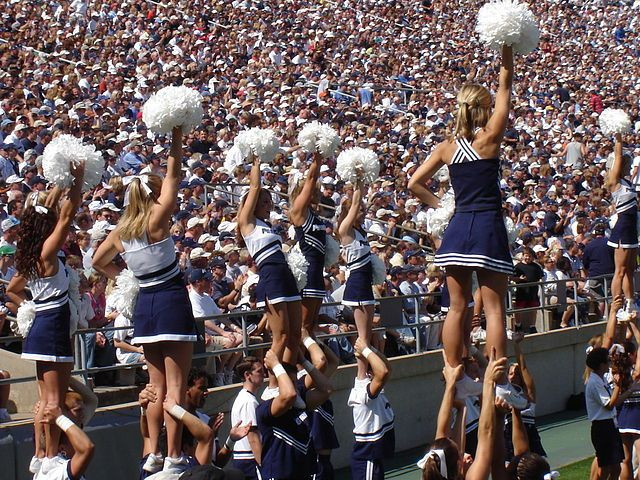Is Cheerleading A Sport? The American Medical Association Decides [VIDEO]

This week, hundreds of leaders from the medical profession will convene in Chicago for the annual meeting the American Medical Association (AMA), one of the most respected and powerful professional organizations in the country. Hotly debated topics will include the future of medical education, the role of innovation in medicine, and the age-old question of whether cheerleading is a sport.
Representing medical doctors around the country, the AMA's House of Delegates votes on resolutions that change the way that medicine is practiced, including how sports-related injuries should be treated and reduced. Cheerleading injuries have concerned doctors in recent decades, leading some to push for its recognition as a competitive sport.
Approximately 66 percent of all catastrophic injuries in high school girl athletes over the past 25 years result from cheerleading, according to the National Center for Catastrophic Sport Injury Research. Once a sideline spectacle to rile up the audience between football plays, cheerleading is now widely popular in its own right, with competitions featuring acrobatic tumbles, high-flying tosses, and risky plays on human pyramids that can be higher than 15 feet tall.
Upgrading cheerleading to sport status will bring more attention to its health consequences. According to the American Academy of Pediatrics (AAP), designating cheerleading as a sport "will afford it the same benefits as other sports, such as availability of athletic trainers, improved access to medical care, limits on practice time, better facilities, certified/qualified coaches, and inclusion in injury surveillance data."
Catastrophic injuries related to cheerleading has tripled from 1.5 per year in the 1980s to 4.8 from 2003 to 2009. Pediatricians suspect that the increase is due to a number of factors, including more participation of children as young as 3 years old and the increasing complexity of skills.
The most common injuries experienced by cheerleaders are sprains and strains to the lower extremities. But overall, injuries have gotten more serious and extreme along with the sport itself, evidenced by an increase in concussions, spinal damage, and broken bones.
Cheerleaders most commonly injure themselves while basing or spotting, tumbling, or falling from heights. Most concussions and closed-head injuries result from stunting, while most head and neck injuries result from pyramid stunts.
Top risk factors for cheerleading injuries include higher body mass index, previous injury, performing on harder surfaces, stunts, and supervision by a coach with low level of training and experience.
On rare and heartbreaking occasions, the injuries can be life threatening or result in death. Lauren Chang of Newton, Mass. died at age 20 after being kicked in the chest while performing a "basket catch" during a cheerleading competition. Seventeen-year-old Patty Phommanyphong experienced commotio cordis — cardiac arrest induced by impact — after being tossed in the air by her teammates. Her heart stopped long enough to deprive her brain of much-needed oxygen, causing irreparable brain damage. Five years after the incident, she could no longer see or speak, and must be fed with a feeding tube.
The AMA is not the first to tackle the issue. In October 2012, the AAP publicly supported designating cheerleading as a sport along with recommendations to minimize injuries and risk. Ways of reducing injury include training in spotting skills, performing risky stunts on softer surfaces, and keeping human pyramids to a maximum of two cheerleaders tall.
Although the NCAA recently went to court refusing to recognize cheerleading as a sport for Title IX purposes, which ensures equal opportunity for athletes regardless of gender, the AMA will likely disagree.
Still unconvinced of the dangers of cheerleading? Watch the compilation of injury videos and decide whether they could use some extra training in spotting.



























